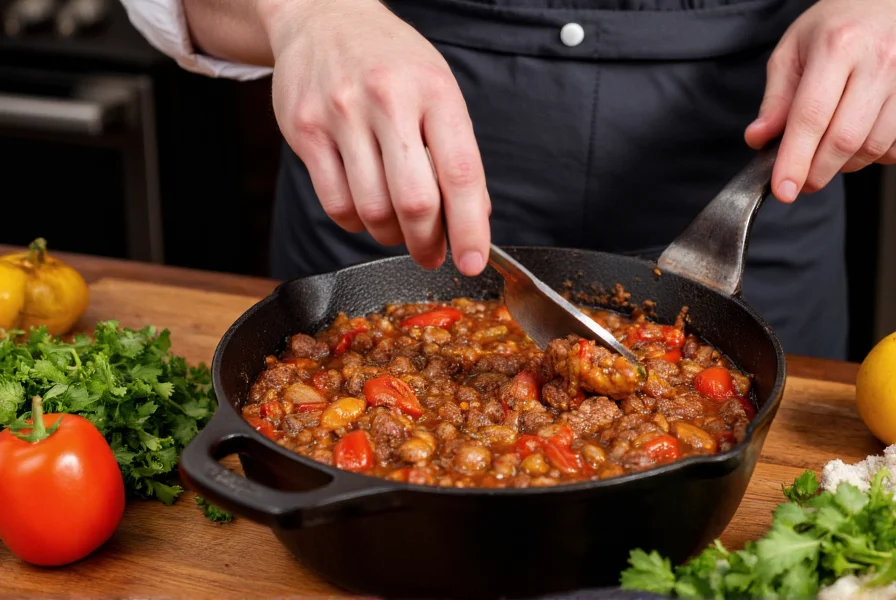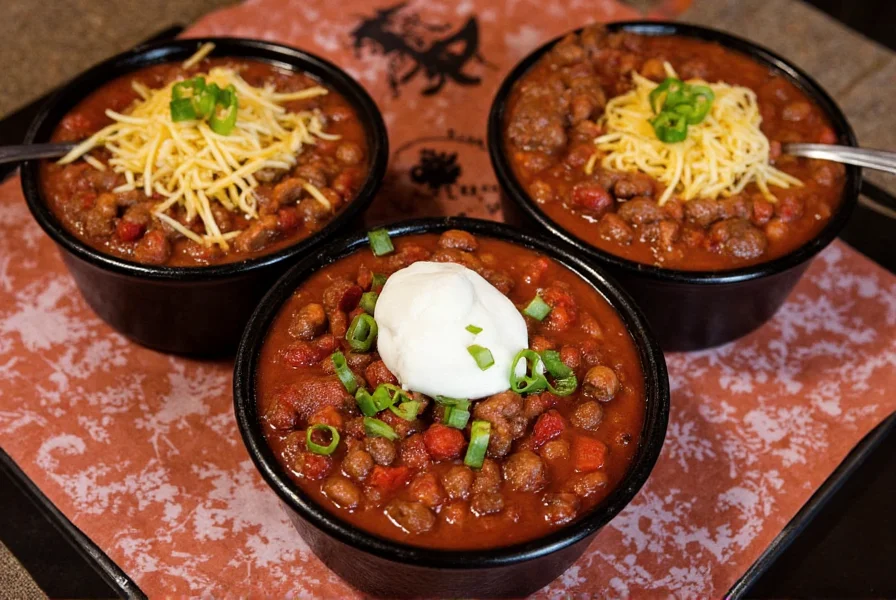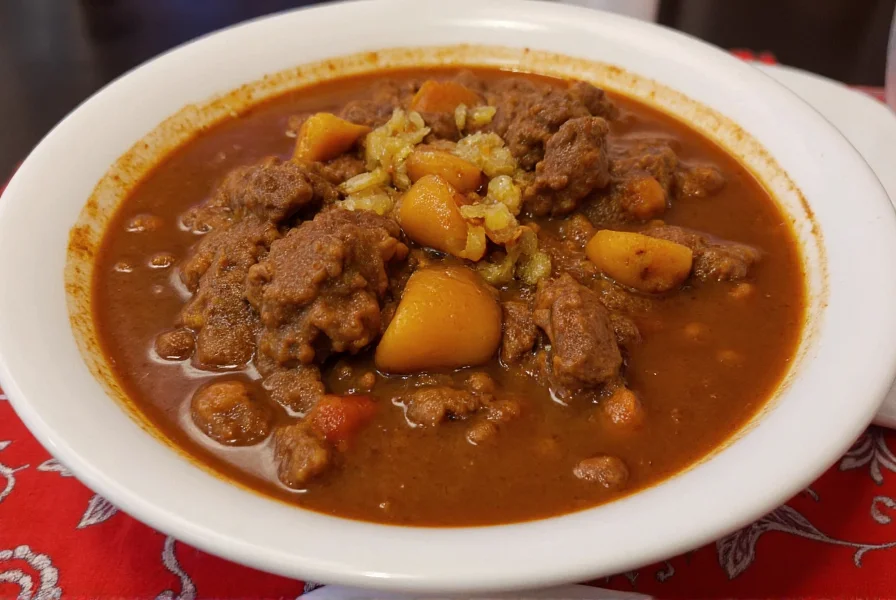Creating exceptional beef chili requires understanding its regional variations and mastering fundamental techniques. While Cincinnati-style incorporates chocolate and cinnamon, traditional Texas red emphasizes pure meatiness without beans. The best beef chili recipe balances heat from ancho and chipotle peppers with earthy cumin and aromatic garlic, simmered long enough for flavors to meld completely.
Essential Ingredients for Authentic Beef Chili
Selecting quality components forms the foundation of superior chili. For authentic beef chili from scratch, you'll need:
- 2 lbs chuck roast or ground beef (80/20 fat ratio)
- 3 tbsp chili powder (New Mexico variety preferred)
- 2 tbsp smoked paprika
- 1.5 tbsp ground cumin
- 1 tbsp garlic powder
- 2 diced onions (yellow for sweetness)
- 3 diced jalapeños (seeds removed for milder heat)
- 28 oz crushed tomatoes
- 1 cup beef stock (homemade preferred)
- 2 tbsp tomato paste
Professional chefs recommend toasting whole cumin seeds before grinding them for maximum flavor extraction. The fat content in chuck roast provides necessary moisture during the long simmering process that defines how to make authentic beef chili properly.

Step-by-Step Cooking Instructions
Follow these precise steps for restaurant-quality results:
- Brown 2 lbs cubed chuck roast in batches, avoiding overcrowding
- Sauté onions and jalapeños until translucent (8-10 minutes)
- Add tomato paste and cook 2 minutes to deepen flavor
- Return beef to pot with all spices, stirring to coat
- Add crushed tomatoes and enough stock to barely cover ingredients
- Simmer covered for 2-3 hours until meat shreds easily
- Skim excess fat before serving
The critical step in any easy beef chili recipe is the slow simmering process. Rushing this stage prevents flavor development. For thicker chili without compromising taste, remove the lid during the final 30 minutes of cooking. Many home cooks wonder how to thicken beef chili properly—avoid cornstarch which creates artificial texture; instead, let natural reduction occur through extended simmering.
| Chili Style | Key Characteristics | Cooking Time |
|---|---|---|
| Texas Red | No beans, pure meat focus, medium heat | 3 hours |
| Cincinnati | Chocolate notes, spaghetti base, cinnamon | 2.5 hours |
| Denver | Green chilies, tomato-heavy, mild heat | 2 hours |
Variations and Customization Options
While purists debate beef chili with beans vs without beans, regional preferences vary significantly. Colorado-style features no tomatoes and extra heat, while New Mexico versions highlight local Hatch chilies. For slow cooker beef chili enthusiasts, transfer all browned ingredients to your appliance and cook on low for 8 hours.
Consider these professional enhancements:
- Add 1 oz dark chocolate during last 30 minutes for depth
- Stir in 1 tbsp instant espresso powder to intensify meat flavor
- Finish with 2 tbsp apple cider vinegar to brighten heavy flavors
- Top with fresh oyster crackers for authentic Texas presentation

Serving Suggestions and Storage Tips
Understanding what to serve with beef chili elevates the experience. Traditional accompaniments include:
- Warm cornbread (essential for dipping)
- Shredded cheddar or Monterey Jack cheese
- Raw white onion for contrast
- Lime wedges for acidity
- Sour cream to moderate heat
Proper storage maintains quality. Cool completely before transferring to airtight containers. Refrigerate for up to 5 days or freeze for 3 months. When reheating, add small amounts of water or broth to restore ideal consistency. The flavors actually improve after 24 hours as spices continue to meld—a key reason why homemade beef chili often tastes better the next day.
Common Mistakes to Avoid
Even experienced cooks make these errors when preparing beef chili:
- Using lean ground beef (minimum 20% fat required for proper texture)
- Adding spices directly to raw meat (toast them in oil first)
- Over-reducing liquid (should remain stew-like, not dry)
- Skipping the deglazing step (fond contains essential flavor)
- Using canned chili powder (freshly ground provides superior taste)
Mastering the best spices for beef chili involves balancing heat sources. Combine milder ancho powder with small amounts of hotter chipotle for complexity without overwhelming heat. Remember that chili's flavor profile develops over time—taste and adjust seasoning after the full cooking process rather than during initial preparation.
What's the difference between chili con carne and regular chili?
Chili con carne ("chili with meat") specifically refers to the traditional Texas-style version made exclusively with meat, chili peppers, and spices—no beans. Regular chili often includes beans and tomatoes, reflecting regional variations that developed as the dish spread beyond Texas.
How can I make my beef chili less spicy without losing flavor?
Reduce heat by removing jalapeño seeds and membranes before dicing. Add natural sweeteners like 1-2 tbsp brown sugar or a diced apple during cooking. Dairy products like sour cream or shredded cheese when serving also counteract spiciness while enhancing overall flavor complexity.
Can I make authentic beef chili in an Instant Pot?
Yes, but with modifications. Brown meat and sauté vegetables using the sauté function first. Pressure cook for 25 minutes, then allow natural release for 15 minutes. Finish by simmering uncovered for 10-15 minutes to thicken. While faster, this method produces slightly different flavor development than traditional slow simmering.
Why does my beef chili taste bland?
Bland chili typically results from insufficient spice blooming or inadequate cooking time. Always toast spices in oil for 1-2 minutes before adding liquids to activate flavor compounds. Additionally, chili requires minimum 2 hours of simmering for flavors to fully develop—rushing this process prevents proper flavor integration.
What cut of beef works best for chili?
Chuck roast is ideal for beef chili from scratch due to its 20% fat content and marbling, which breaks down during slow cooking to create rich texture. Brisket also works well but requires longer cooking. Avoid lean cuts like sirloin which become tough and dry during extended simmering.











 浙公网安备
33010002000092号
浙公网安备
33010002000092号 浙B2-20120091-4
浙B2-20120091-4